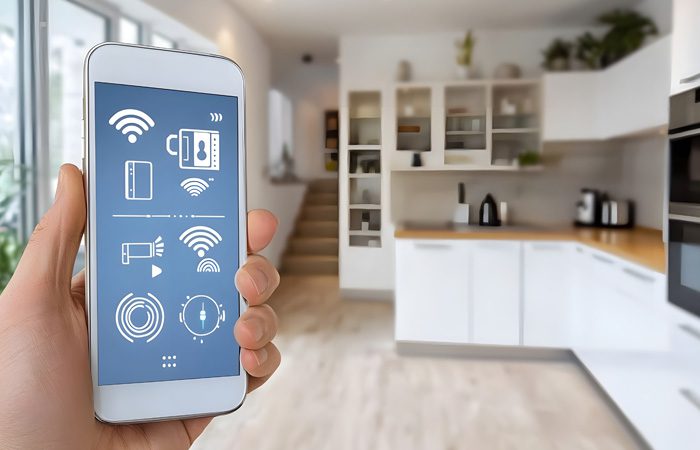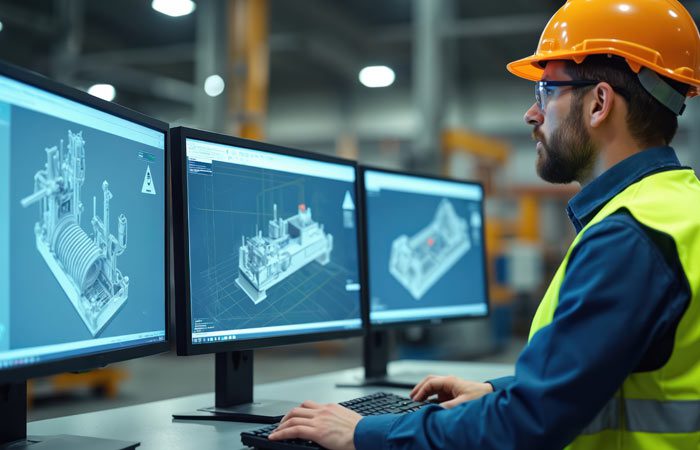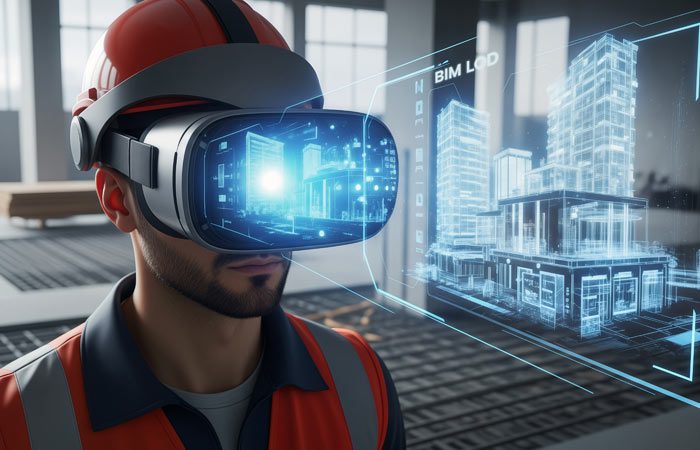
EIOT in HVAC System Design – Real-Time Performance Optimization
The HVAC industry is undergoing a technological transformation with the adoption of the Engineering Internet of Things (EIOT). No longer limited to basic heating, ventilation, and cooling, modern smart HVAC systems now leverage IoT connectivity, data analytics, and automation to achieve HVAC performance optimization in real time. For commercial and industrial facilities, integrating EIOT in HVAC is not just about comfort—it’s about energy efficiency, predictive maintenance, and sustainable operations.
The Rise of IoT-Enabled HVAC Design
Traditional HVAC systems often rely on fixed schedules and manual control, leading to inefficiencies and unexpected failures. With IoT-enabled HVAC design, sensors, connected devices, and cloud platforms come together to create connected HVAC systems capable of self-regulating and adapting to environmental changes.
Key benefits of HVAC IoT solutions include:
- Real-time HVAC monitoring for instant performance insights
- Predictive maintenance HVAC strategies that reduce downtime
- Sensor-based HVAC control to dynamically adjust airflow, temperature, and humidity
- Cloud-based HVAC management for centralized control across multiple sites
By combining data-driven intelligence with engineering expertise, industrial IoT HVAC applications enable smarter, more sustainable building operations.
Real-Time HVAC Monitoring and Performance Analytics
At the core of HVAC performance optimization lies the ability to continuously monitor system health. Through real-time data analytics in HVAC performance optimization, facility managers can track variables such as air quality, energy consumption, and equipment efficiency.
HVAC performance analytics not only identifies underperforming equipment but also provides actionable recommendations to fine-tune operations. With real-time HVAC monitoring, anomalies are detected instantly, reducing the risk of costly breakdowns.
Predictive Maintenance in HVAC Systems
One of the biggest advantages of adopting EIOT in HVAC is the ability to shift from reactive to predictive maintenance. Traditionally, HVAC units were serviced at fixed intervals, often leading to unnecessary costs or unplanned failures.
Now, with using EIOT for predictive maintenance in HVAC systems, data from IoT sensors helps anticipate failures before they occur. For example:
- Vibration sensors on motors can detect early signs of wear
- Temperature fluctuations in compressors can indicate potential breakdowns
- Airflow monitoring can highlight filter blockages
By applying predictive maintenance HVAC strategies, organizations can extend equipment life, reduce downtime, and minimize repair costs.
Smart HVAC Control with IoT Sensors
Smart HVAC control with IoT sensors is revolutionizing how buildings maintain comfort and efficiency. Sensor-based HVAC control systems adjust cooling and heating in response to occupancy, ambient conditions, or even predictive weather patterns.
For example, in a commercial building:
- Smart thermostats adjust temperatures when rooms are unoccupied
- CO2 sensors regulate ventilation based on air quality
- Humidity sensors help maintain comfort and prevent equipment damage
These smart HVAC systems not only improve occupant well-being but also drive HVAC energy efficiency by avoiding unnecessary energy use.
HVAC in Building Automation Systems
Modern building automation HVAC solutions integrate seamlessly with lighting, security, and other building services. Through data-driven HVAC design, engineers can optimize energy loads, balance performance across multiple systems, and ensure compliance with sustainability standards.
Benefits of IoT-enabled HVAC design for commercial buildings include:
- Reduced operational costs
- Improved occupant comfort
- Enhanced compliance with energy codes
- Greater visibility into system performance across portfolios
This integration creates a holistic smart building ecosystem where HVAC works as a critical component of overall efficiency.
Cloud-Based HVAC Management and Remote Monitoring
Cloud platforms play a pivotal role in HVAC remote monitoring systems. With cloud-based HVAC management, operators can oversee multiple facilities from a central dashboard, enabling quick interventions when anomalies arise.
Connected HVAC systems equipped with cloud connectivity also allow:
- Real-time updates and performance alerts
- Remote troubleshooting without on-site intervention
- Historical data storage for long-term analysis
- Scalable deployment across multi-location enterprises
This cloud-first approach makes it possible to ensure consistent HVAC energy efficiency across an organization’s entire infrastructure.
How EIOT Improves HVAC System Efficiency
The integration of EIOT in HVAC fundamentally changes the way systems operate. Instead of functioning on rigid schedules, engineering Internet of Things HVAC designs continuously adapt based on real-time HVAC monitoring and analytics.
Here’s how EIOT improves HVAC system efficiency:
- Dynamic optimization: Systems adjust to real-time occupancy and load demands
- Predictive insights: Maintenance issues are flagged before they escalate
- Energy reduction: Smart scheduling and zoning minimize wastage
- Performance benchmarking: Facilities can compare efficiency across multiple sites
These efficiencies make EIOT-powered HVAC IoT solutions critical for modern smart buildings.
The Future of Smart HVAC Systems
With advancements in 4G/5G connectivity, AI, and cloud computing, the role of EIOT in HVAC will only grow. Data-driven HVAC design will evolve to include AI-powered performance analytics, enabling near-autonomous operation. Future smart HVAC systems will not only regulate indoor climate but also integrate with renewable energy grids and sustainability platforms.
For companies like TAAL Tech, adopting industrial IoT HVAC applications ensures real-time optimization, predictive maintenance, and long-term efficiency. Their approach highlights how IoT-enabled HVAC design can help clients transition from conventional to intelligent infrastructure.
The adoption of EIOT in HVAC system design marks a major leap toward real-time performance optimization. From HVAC remote monitoring systems and predictive maintenance HVAC to cloud-based HVAC management and sensor-based HVAC control, the benefits of IoT-enabled HVAC design for commercial buildings are clear. By integrating smart HVAC systems with building automation HVAC, organizations can achieve significant HVAC energy efficiency while ensuring occupant comfort and safety.
In today’s world, where efficiency, sustainability, and reliability are non-negotiable, EIOT-driven connected HVAC systems provide the foundation for the buildings of the future.


